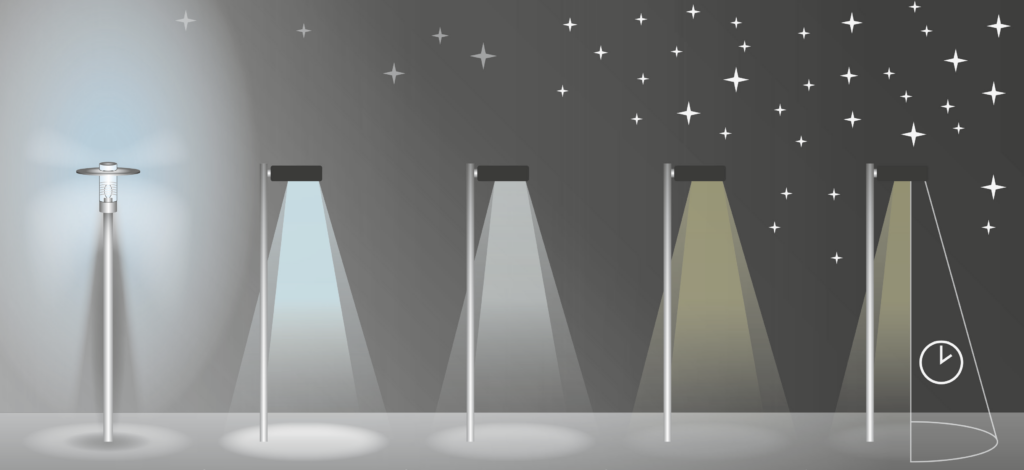Let night be night again
Darkness at night is important for animals, plants and also us humans. In areas where the night hours are not illuminated by artificial light, nocturnal animals can live out their normal way of life without environmental stress. Migratory birds remain undisturbed on their migration routes and are not distracted by artifi cial light. Insects, the natural pollinators for various plants, are protected because they are not attracted by unnatural light sources where they usually die. This in turn also allows animals – such as bats and hedgehogs – to hunt sufficient insects in their natural habitat.
But day-active animals and humans also benefit from a dark night, as it supports the natural rhythm of life and a restful sleep. Last but not least, it is also a pleasure for us humans to observe the starry sky in really dark regions.

Heavy light pollution dazzling, wasteful, with high blue content
>>>>>>>
Low light pollution
focused, efficient, with low blue content, additionally dimmed or switched off at certain times
Criteria for the sustainable use of light outdoors
- Illuminate only those areas that are absolutely functionally necessary.
- Avoid light smog: illuminate the object precisely (with a narrow cone of light), without glare and with downward beams.
- Keep the light color below 3,000 Kelvin, because warm light tones have a lower attracting effect on insects
- Avoid illuminating bodies of water and green areas.
- Avoid decorative lighting of buildings, monuments and others structures or at least dim the light and switch it off in the late hours of the night.
Sensitively shining on historic buildings
Light also has a highly aesthetic component. It highlights, emphasises, and attracts. In such applications, modern mirror optics should be employed, as they allow for more focused light emission and can also be dimmed.
Sensor-based smart lighting systems
Smart lighting systems are based on the coordination of light sources, sensors and external factors – such as daylight and user behavior. These systems adjust the lighting as needed to accommodate complex and changing situations, making them exceptionally efficient.